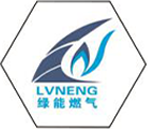
Aug . 06, 2024 10:56
Back to list
Exploring the Innovative Technologies and Applications of Modern Gasification Processes in Energy Production
Understanding Gasifiers A Key Technology for Sustainable Energy Production
In the quest for sustainable energy solutions, gasification has emerged as a promising technology that can convert various carbon-based materials into syngas, a mixture of hydrogen and carbon monoxide. This process not only paves the way for cleaner energy production but also helps in managing waste effectively. Gasifiers have gained significant attention for their versatility, efficiency, and environmental benefits, making them a vital component in the transition towards a more sustainable energy landscape.
What is Gasification?
Gasification is a thermochemical process that involves the conversion of organic or fossil-based materials into a gaseous fuel. The primary feedstocks for gasifiers include biomass, coal, or even municipal solid waste. During the gasification process, these materials are exposed to high temperatures (typically between 700°C and 1,500°C) in the presence of a limited amount of oxygen or steam. This controlled environment facilitates the breakdown of complex molecules, resulting in the production of syngas.
Syngas can be utilized in a variety of applications. It can be either burned directly for heat and power generation or further processed into biofuels, chemicals, and fertilizers. The ability to produce a variety of products from a single process is one of the key advantages of gasification.
The Types of Gasifiers
Gasifiers can be classified into different types based on their design, operation, and feedstock. The three most common types are fixed bed, fluidized bed, and entrained flow gasifiers
1. Fixed Bed Gasifiers These are the simplest form of gasifiers where the feedstock is held in place in a fixed bed while air or steam is introduced from below. Fixed bed gasifiers are often used for small-scale applications and are well-suited for biomass feedstocks.
2. Fluidized Bed Gasifiers In this type, the feedstock is suspended in a bed of sand or ash, which is fluidized by the upward flow of air or steam. This design allows for better temperature control and can handle a wider variety of feedstocks, making it suitable for larger-scale applications.
gasifier

3. Entrained Flow Gasifiers These are designed to handle finely ground feedstocks that are injected into a high-temperature gas stream. They are highly efficient and are often used in industrial applications for converting coal into syngas.
Environmental Benefits
Gasification presents several environmental advantages over conventional fossil fuel combustion processes. Firstly, it significantly reduces greenhouse gas emissions by making use of renewable biomass and waste materials. Secondly, the generated syngas can be used to replace natural gas or be converted into hydrogen, a clean fuel option with minimal carbon footprint.
Additionally, gasification can help in waste management by diverting organic waste from landfills. Instead of decaying and producing methane—a potent greenhouse gas—waste can be transformed into valuable energy. This circular approach to waste and energy promotes a more sustainable ecosystem.
Challenges and Future Prospects
Despite its numerous advantages, gasification technology faces some challenges, including high capital costs, technological complexities, and the need for a reliable supply of feedstock. However, ongoing research and development efforts aim to improve the efficiency and reduce the costs associated with gasifiers.
As the world strives for energy independence and the reduction of greenhouse gas emissions, gasification stands as a viable solution. With advancements in technology and increasing investments in renewable energy infrastructure, gasifiers have the potential to play a pivotal role in the global energy transition, providing clean and sustainable energy for generations to come.
In conclusion, gasification presents a multifaceted approach to energy production and waste management, embodying the principles of sustainability and efficiency. By harnessing this technology, we can pave the way towards a cleaner, more resilient energy future.
Latest news
-
Safety Valve Spring-Loaded Design Overpressure ProtectionNewsJul.25,2025
-
Precision Voltage Regulator AC5 Accuracy Grade PerformanceNewsJul.25,2025
-
Natural Gas Pressure Regulating Skid Industrial Pipeline ApplicationsNewsJul.25,2025
-
Natural Gas Filter Stainless Steel Mesh Element DesignNewsJul.25,2025
-
Gas Pressure Regulator Valve Direct-Acting Spring-Loaded DesignNewsJul.25,2025
-
Decompression Equipment Multi-Stage Heat Exchange System DesignNewsJul.25,2025

